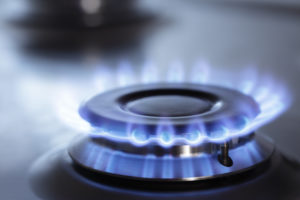 Natural gas was little changed on Tuesday, remaining not far off a 1-month low touched on Monday, as overall comfortable temperatures across the US paved the way for additional larger-than-average inventory builds, with supplies expected to flip into a surplus to the average this week.
Natural gas was little changed on Tuesday, remaining not far off a 1-month low touched on Monday, as overall comfortable temperatures across the US paved the way for additional larger-than-average inventory builds, with supplies expected to flip into a surplus to the average this week.
Natural gas for delivery in July traded 0.04% higher at $2.650 per million British thermal units at 7:41 GMT, shifting in a daily range between $2.656 and $2.647. The contract rose 0.26% on Monday to $2.649 per mBtu, having earlier fallen to $2.603, the lowest since April 30th.
Natural gas demand across the northern US will be low compared to normal through June 8th, according to NatGasWeather.com, and will become moderate across the South. Thea eastern US will experience one more day of unpleasant conditions before a settled cool system accompanied by heavy showers and thunderstorms exits. Highs over the Great Lakes and Ohio Valley will be in the 60s today, and 50s near the Canadian border. Some cooling will also spill into the southeastern regions of the country, but temperatures there will remain overall quite warm.
As the cool blast dissipates, high pressure will strengthen, pushing readings up across most of the US. The North will warm into the 70s and 80s, removing the need for heating and spurring light cooling demand, while Texas, Florida and much of the South reach the upper 80s and 90s by Thursday, driving the nation’s strongest cooling demand. The West will be somewhat cooler as a weather system tracks inland.
Very warm conditions will persist through the weekend, especially across Texas, Florida and the Gulf Coast where the mercury will reach the low 100s, NatGasWeather.com said. Active weather will continue next week as well, with widespread thunderstorms and showers. The southern US will remain subjected to hot temperatures, especially over the Southeast, while the North continues to be impacted by cooler Canadian weather systems, keeping temperatures comfortable, and conditions across the West remain mixed.
Readings
According to AccuWeather.com, the high in New York on June 3-4th will be 68 degrees Fahrenheit, 8 below usual, before rising afterwards to the mid-upper 70s, and occasionally low 80s. Chicago will fail to exceed 69 degrees today, 7 beneath normal, but will warm up to as much as 80 degrees on June 4th.
Down South, Houston will peak at 88-89 degrees through June 4th, compared to the average 89, before rising to 90-92 degrees the following six days. On the West Coast, Los Angeles will peak in the low-mid 70s through June 10th, followed by a warm-up in the 80s.
Inventories
The Energy Information Administration reported last Thursday that natural gas inventories in the US rose by 112 billion cubic feet in the week ended May 22nd, sharply exceeding analysts’ median estimate for a 99-bcf gain. Total gas held in US storage hubs amounted to 2.101 trillion cubic feet, narrowing a deficit to the five-year average of 2.119 trillion to 0.8%, or 18 bcf, from 1.7% a week earlier. Stockpiles were also at a surplus of 54.0% to the year-ago level of 1.364 trillion cubic feet.
This Thursdays stockpiles report is expected to show another much larger than usual inventory gain, with the five-year average build for the week ended May 29th pegged at 92 bcf, while supplies rose by 118 bcf a year earlier. Early estimates call for an inventory increase of 120 – 125 billion cubic feet, which, if confirmed, would flip deficits to the average into a surplus.
The report after, due out on June 11th will also reflect a much larger than normal build. The five-year average inventory gain for the week ended June 5th is 89 bcf, while stockpiles rose by 109 bcf a year earlier.
Pivot points
According to Binary Tribune’s daily analysis, July natural gas futures’ central pivot point stands at $2.641. In case the contract penetrates the first resistance level at $2.680 per million British thermal units, it will encounter next resistance at $2.710. If breached, upside movement may attempt to advance to $2.749 per mBtu.
If the energy source drops below its S1 level at $2.611 per mBtu, it will next see support at $2.572. In case the second key support zone is breached, the power-station fuel’s downward movement may extend to $2.542 per mBtu.
In weekly terms, the central pivot point is at $2.730. The three key resistance levels are as follows: R1 – $2.827, R2 – $3.012, R3 – $3.109. The three key support levels are: S1 – $2.545, S2 – $2.448, S3 – $2.263.





